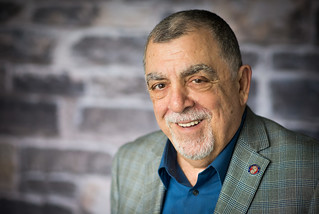school
Things We Can Learn from Birds
Recently a surprising thing happened as my analysand was talking about whether he could trust his assessments of new emotional experiences. He wondered, did I know what he was  talking about? Had I had similar experiences? How do we really know that the way we are interpreting an event- a motive of our friend or boss, an insight, even a perception – is true? We could just be complimenting or castigating ourselves, after all, with our own made-up view. Surely the other person would see it differently, with themselves as the protagonist or the villain. Suddenly he saw a bright green bird high in the magnolia tree that nearly fills the area outside my large picture window. It appeared at a perfect time in the session to highlight the questions he had just been asking. These questions quickly attached themselves to the sighting: Was it real? Imagined? Hallucinated?
talking about? Had I had similar experiences? How do we really know that the way we are interpreting an event- a motive of our friend or boss, an insight, even a perception – is true? We could just be complimenting or castigating ourselves, after all, with our own made-up view. Surely the other person would see it differently, with themselves as the protagonist or the villain. Suddenly he saw a bright green bird high in the magnolia tree that nearly fills the area outside my large picture window. It appeared at a perfect time in the session to highlight the questions he had just been asking. These questions quickly attached themselves to the sighting: Was it real? Imagined? Hallucinated?
Google suggested that the tiny green bird might be a rare sighting of a migrating orange-crested warbler, touching down briefly on its journey. Or was it just a trick of light, the lush dark green of the leaves casting a green glow on another little bird? In a session with another analysand, the hour before this patient was due to arrive for his next session, I saw the brightest cardinal I thought I had ever seen. It stood on a twig for what seemed like a long time, cocking its uncannily bright head and seeming intent on studying us indoors in our glassed-in world. What was going on in my tree? Something about the light? Or do we attend to things selectively for purposes we only discover later (if at all) or because they seem to fit in a stream of associations simply because we, ourselves, have gathered them into it in ways that help us understand and communicate with each other?
Luckily, it is such questions themselves, rather than their answers, that propel an analysis, or indeed any other form of the examined life. Luckily, many questions do not have totally satisfying answers, since if they did, that would be the end of the exploration.
Mara Wagner, Psya.D., Cert.Psya.
Sneak Peek at Our New Website!
The entire BGSP administrative team has been hard at work pulling together ideas and new material for the School’s NEW website. We hope to launch the site near the beginning of the Fall semester! In the meantime, we wanted to give you a little “sneak peek” at the new design and content that will be included on the website! Enjoy…
What Your Therapist Thinks of You: A Letter to the Editor
As social media creeps into more and more previously private parts of our lives, it is understandable that even clinicians in the mental health field would be tempted to join in.
In “What the Therapist Thinks About You” (July 7, 2014) Jan Hoffman presents examples of taking the process of treatment out of the office and into the domain of the internet, including posting session notes and diagnoses. He refers to one study showing that patients reading their therapist’s comments “became more involved in their care.”
Considering that mental health patients fall within the very wide continuum from psychotic to neurotic illness, it is difficult to evaluate such experiments with a general conclusion.
The office is the sanctuary where the patient is free to reveal everything. Today’s technological wonders bring the understandable temptation of instantaneous gratification through communication outside of the office. But the slow and deliberate analytic process is jeopardized when the client moves from the session to an untutored reading of the therapist’s notes or diagnosis.
Posting the notes amounts to an analytic intervention and, like all interventions, should be aimed at moving the process of treatment to new and/or deeper places. If a sharing of communication outside the office is intended to resolve a resistance I am all for it, but it concerns me that in the sped up world too many are moving too fast.
Theodore Laquercia, PhD
NY State Licensed Psychoanalyst
President
Society of Modern Psychoanalysts
Emeritus of Boston Graduate School of Psychoanalysis

Read the full article, “What The Therapist Thinks About You” here.
Psychoanalysis at Work in the Community | Easing the Pain of the Most Vulnerable

Vincent Panetta, Ph.D., decided early in his career that if his patients would not come to him, he would go to them.
Now director of outreach services for South Shore Mental Health in Plymouth, Massachusetts, he reports that he and his staff have stopped that “revolving door that is so typical of mental health services,” working with a very challenging population of children, adolescents, and families, mostly in their homes and other community settings. “Eventually, you want your patients to come to the office, of course,” Dr. Panetta says, “but I immediately observed when I worked as a psychotherapist in my first outpatient clinic in Boston how much need there was for home visits.”
Dr. Panetta developed an outreach program at a counseling service south of Boston. It was so successful that when he moved the whole staff to South Shore Mental Health in 1999, all of the patients followed. They now see around 300 people a week, including referrals from the state Department of Mental Health, the Department of Children and Families, and the Department of Developmental Services. Their patients include many children from foster homes, developmentally disabled adults, and patients from group homes and workshops.
Dr. Panetta and several of his clinicians have studied at the Boston Graduate School of Psychoanalysis (BGSP), where he is now on the faculty. He considers his training at the school essential in his work with difficult cases. “We see young children who have already lived two lifetimes, in terms of abuse, loss, and emotional damage,” he explains. “Some of our patients are flagrantly psychotic, paranoid, or bipolar. We have kids who have been in and out of DYS (Department of Youth Services) and suffer from oppositional defiant disorders and explosive disorder.”
“Without my psychoanalytic knowledge, this would be like operating in the dark, knee-deep in the mud. What I got from BGSP provides that guiding light and the tools I need to work with these kids.”
“Psychoanalysis teaches you that human emotions are very contagious. When you are working with kids who have a good reason to be angry, self-destructive, and aggressive, you quickly become infected with those feelings. My training at BGSP helps me navigate those feelings, to study them until I have enough information to make an intervention. It’s like a puzzle. I intervene based on what I feel, know, study, and observe.”
“Without this kind of training clinicians often get burned out,” he adds. “They get tangled in their own emotions and the emotions of the patient.”
The proof is in the results, Dr. Panetta points out. “We hold onto our patients, he says. “Before working with us, some had been to several therapists, were periodically hospitalized, medicated, living in group homes without jobs. They weren’t making any progress. Today some of our kids have graduated from college, hold jobs, are living independently, and are off medication. Thanks to my BGSP training and our outreach program, we have really been able to help our patients.”

